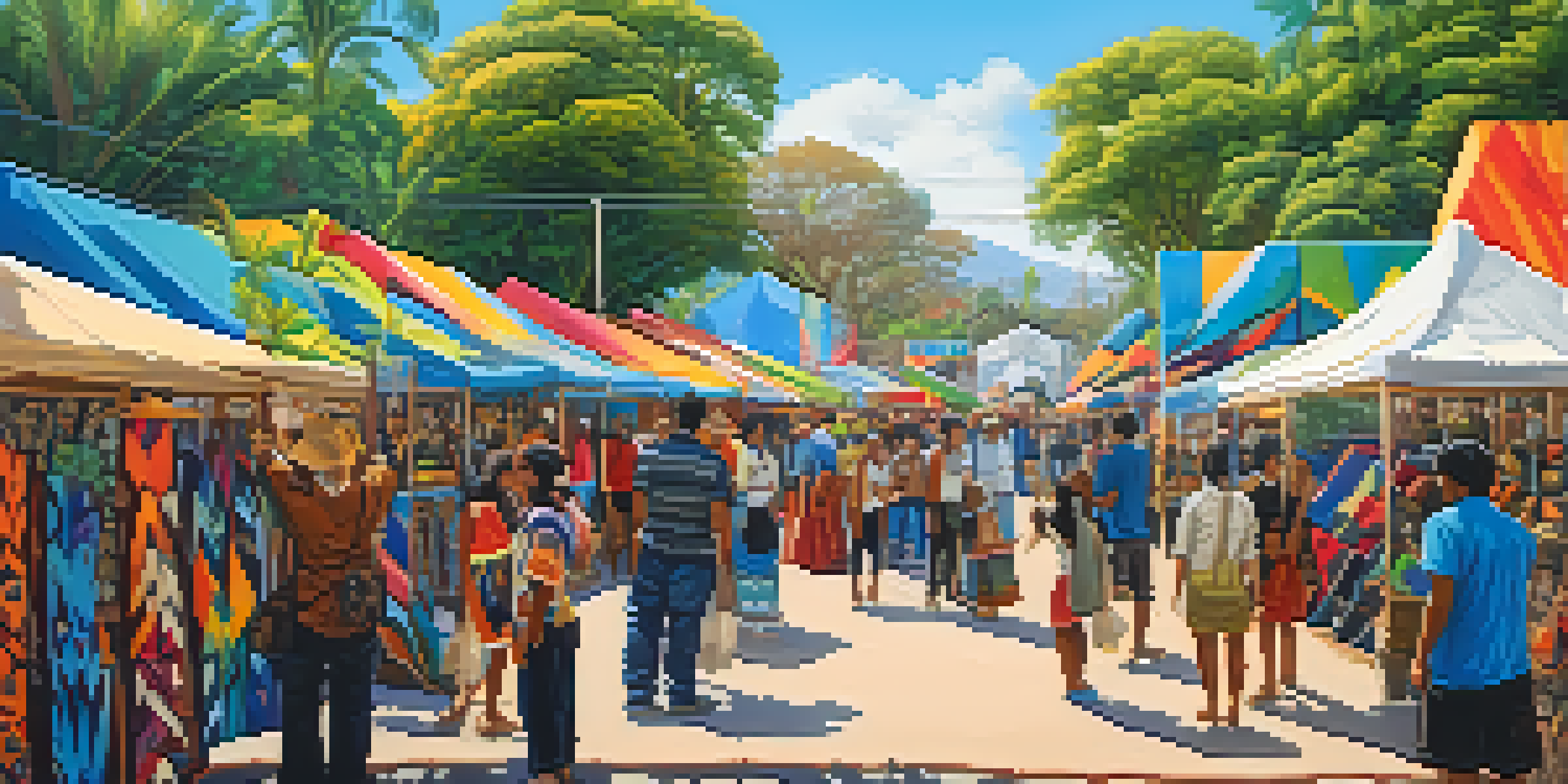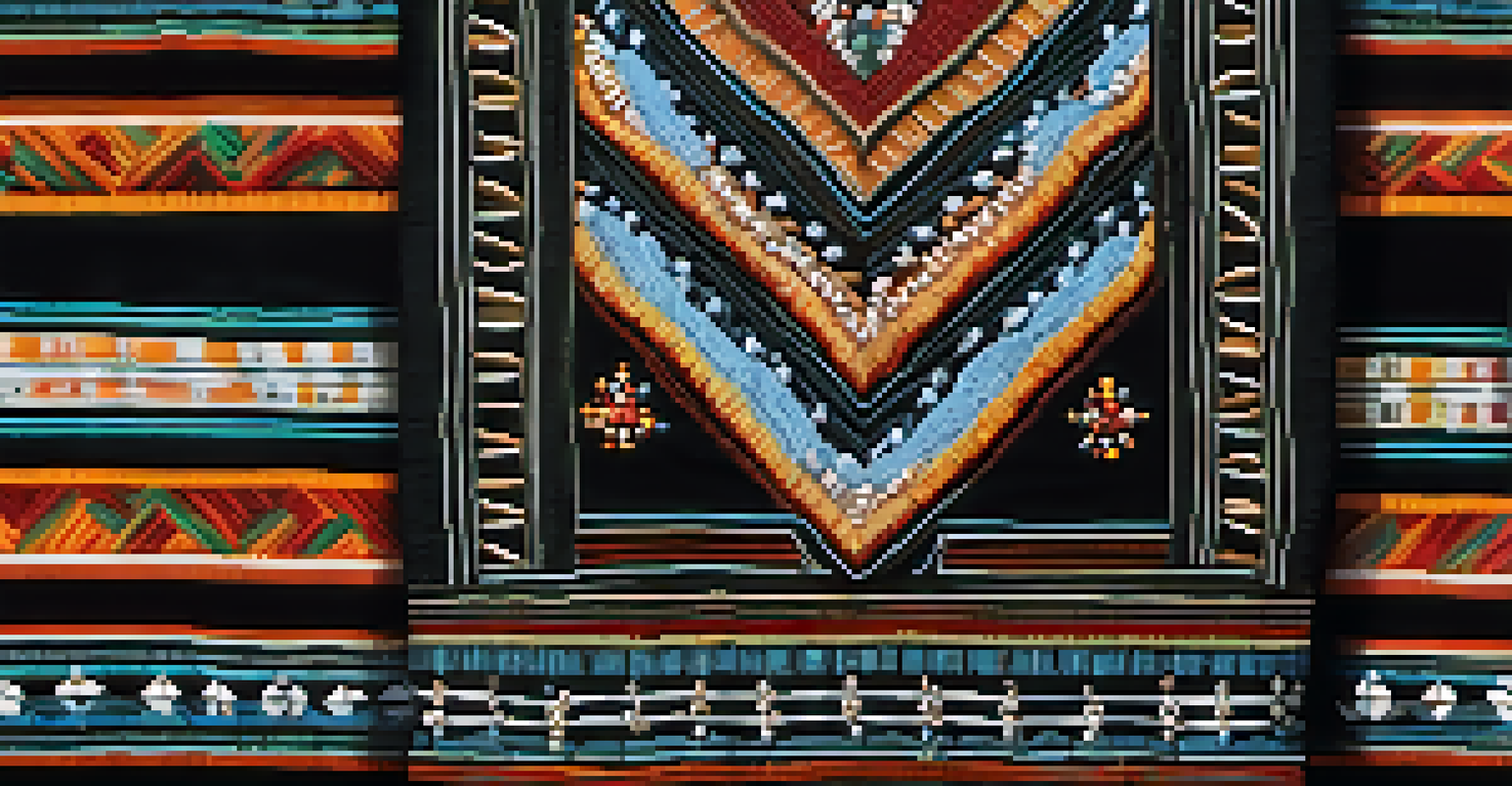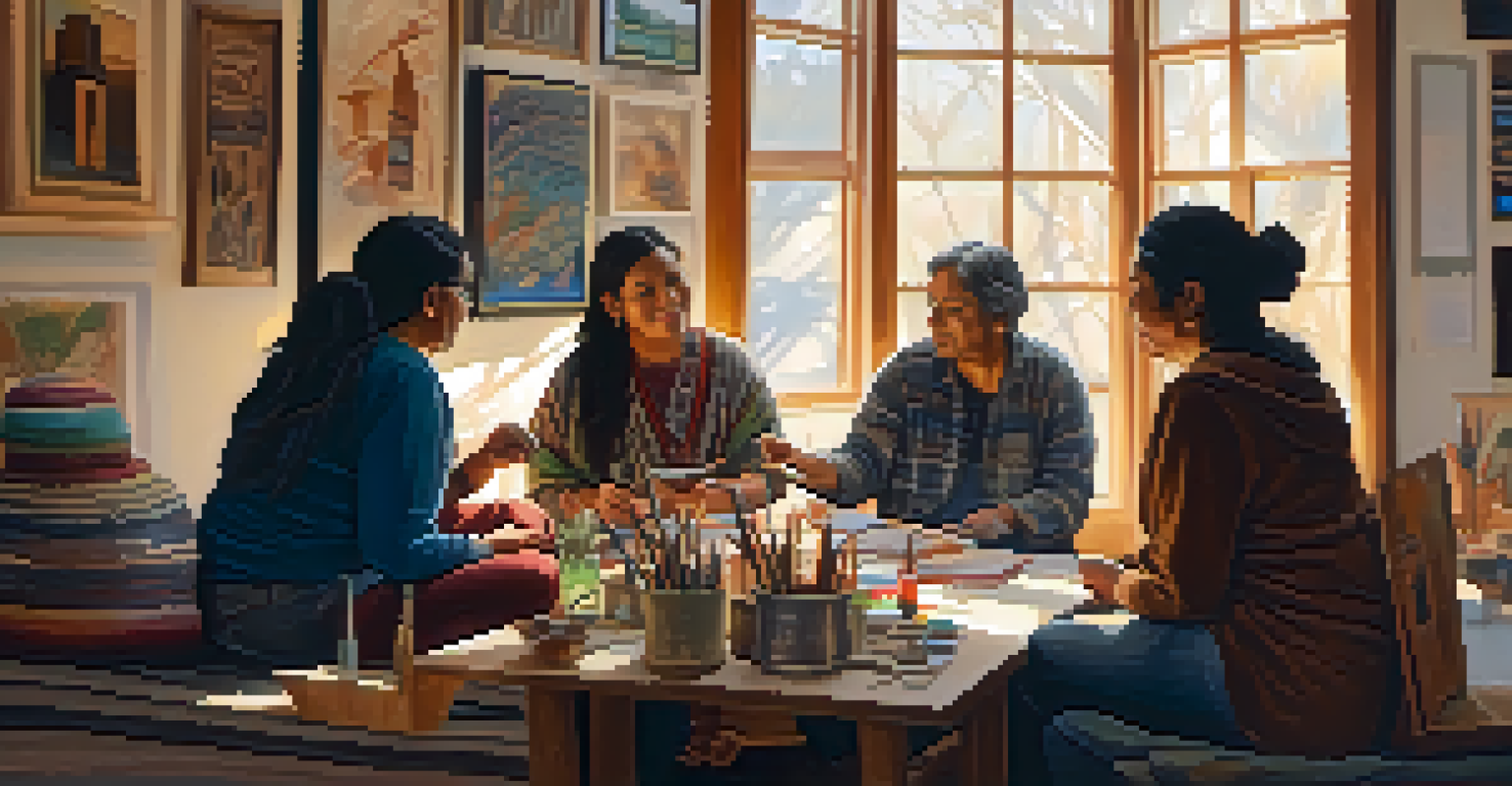Cultural Appropriation: Perspectives from Indigenous Artists

Understanding Cultural Appropriation and Its Impact
Cultural appropriation occurs when elements of a marginalized culture are taken by members of a dominant culture without permission. This often leads to misrepresentation and exploitation, stripping away the cultural significance of those elements. For Indigenous communities, appropriation can feel like a denial of their identity and history, as their traditions are often commodified for profit.
Cultural appropriation is the act of taking or using elements from a culture without permission, often leading to exploitation.
The impact of appropriation is profound, as it perpetuates stereotypes and diminishes the authenticity of Indigenous expressions. When art, clothing, or symbols are used without context, they can contribute to a narrative that overlooks the rich history and struggles of Indigenous peoples. This can further marginalize these communities, making it crucial to understand the difference between appreciation and appropriation.
Ultimately, recognizing cultural appropriation invites a deeper conversation about respect, ownership, and the importance of cultural heritage. It reminds us that engaging with another culture requires thoughtfulness and consent, emphasizing the need to honor the voices and perspectives of those whose cultures are being represented.
The Role of Indigenous Artists in Cultural Conversations
Indigenous artists play a vital role in shaping the narrative around cultural appropriation. By sharing their work, they provide insights into their cultures and challenge the misinterpretations that often arise from appropriation. Their art becomes a powerful tool for education, helping audiences understand the significance of their heritage and the impact of appropriation.

Many Indigenous artists use their platforms to advocate for cultural integrity and ownership. They emphasize the importance of storytelling in their work, which is often rooted in personal and communal experiences. This storytelling aspect allows them to reclaim their narratives and assert their identities in a world where these stories have been historically marginalized.
Cultural Appropriation Defined
Cultural appropriation occurs when dominant cultures exploit elements of marginalized cultures without permission, leading to misrepresentation and loss of cultural significance.
Through their creativity, Indigenous artists encourage conversations about respect and the ethical sharing of cultural elements. They remind us that art is not just a product but a living expression of culture, deserving of recognition and respect. This advocacy helps to foster a greater appreciation for Indigenous cultures, shifting the focus from appropriation to collaboration and understanding.
Examples of Cultural Appropriation in Art and Fashion
One striking example of cultural appropriation in fashion is the use of Indigenous patterns and motifs by high-end brands without crediting their origins. This often leads to the commodification of sacred symbols, reducing them to mere aesthetic choices devoid of their cultural significance. Such practices can alienate Indigenous communities, who see their heritage exploited for profit.
Art is a way of expressing culture, and when we appropriate it, we strip away its context and meaning.
In the art world, we often witness similar instances where Indigenous artists' styles or themes are appropriated by non-Indigenous creatives. This not only undermines the originality of Indigenous art but also deprives these artists of recognition and economic opportunities. When their work is borrowed without permission, it raises questions about the ethics of creativity and the importance of cultural context.
These examples highlight the ongoing challenges Indigenous artists face in a society that often prioritizes profit over respect. They serve as a reminder that while sharing and borrowing can lead to beautiful collaborations, it must be approached with cultural sensitivity and awareness of the histories involved.
The Importance of Consent and Collaboration
Consent is a crucial aspect of cultural exchange, especially when it comes to Indigenous cultures. Engaging with another culture's elements requires a deep understanding and respect for their significance. Artists and creators are encouraged to seek permission and collaborate with Indigenous communities to ensure that their work is respectful and accurately represents the culture.
Collaboration can lead to enriching experiences for both Indigenous and non-Indigenous artists. By working together, they can create art that honors the cultural origins, allowing for a more authentic exchange. This approach not only supports Indigenous artists but also educates the wider public about the complexities of cultural identity.
Indigenous Artists as Educators
Indigenous artists challenge misinterpretations and advocate for cultural integrity, using their work to educate others about their heritage and the impact of appropriation.
Ultimately, prioritizing consent and collaboration fosters a sense of community and understanding. It challenges the notion of ownership and encourages a dialogue that respects the richness of cultural diversity. By embracing this mindset, we can create spaces for creativity that uplift all voices involved.
Educating Others About Cultural Appropriation
Education is one of the most powerful tools in combating cultural appropriation. By raising awareness about the nuances of cultural exchange, we can foster a greater understanding of the issues Indigenous communities face. Workshops, lectures, and discussions led by Indigenous artists can provide invaluable insights into the significance of their cultures and the impact of appropriation.
Incorporating Indigenous perspectives into educational curriculums can also play a critical role in this effort. By teaching students about the importance of cultural respect and the difference between appreciation and appropriation, we can cultivate a generation that values diversity and integrity in artistic expression. This education can help dismantle stereotypes and promote empathy.
Moreover, engaging with Indigenous literature, art, and history allows us to appreciate these cultures on a deeper level. By amplifying Indigenous voices and supporting their work, we contribute to a cultural landscape that honors and respects the richness of their heritage. Education is not just about knowledge; it's about fostering respect and understanding.
Advocating for Indigenous Rights and Representation
Advocacy for Indigenous rights is essential in the fight against cultural appropriation. Organizations and individuals must work together to ensure that Indigenous voices are heard and represented in all areas, including the arts. This representation is crucial for fostering a culture that respects and honors Indigenous identities and experiences.
Support for Indigenous artists can take many forms, from purchasing their work to promoting their events and exhibitions. By prioritizing Indigenous creatives, we help create a marketplace that values authenticity over appropriation. This shift not only empowers artists but also enriches the cultural landscape for everyone.
Importance of Consent in Exchange
Engaging with another culture requires consent and collaboration to ensure respectful representation and promote authentic cultural exchange.
Additionally, advocating for policies that protect Indigenous cultural heritage is vital. This includes pushing for legal protections against unauthorized use of cultural elements and supporting initiatives that promote Indigenous rights. By standing in solidarity with Indigenous communities, we can address the systemic issues that allow appropriation to persist.
Moving Towards Respectful Cultural Exchange
Moving towards respectful cultural exchange involves a commitment to understanding and honoring the origins of cultural elements. It requires us to be mindful of our actions and the potential impact they may have on marginalized communities. By cultivating a mindset of respect, we can appreciate the beauty of diverse cultures without appropriating them.
Engaging in meaningful conversations about cultural exchange can also pave the way for more inclusive practices in the arts. This includes recognizing and celebrating the contributions of Indigenous artists and ensuring they are given the platform they deserve. When we elevate these voices, we not only enrich our own understanding but also create a more equitable cultural landscape.

Ultimately, respectful cultural exchange is about building relationships based on trust and mutual respect. It invites us to learn from one another and celebrate the richness of our differences. By committing to this approach, we can help create a world where all cultures are honored and valued.